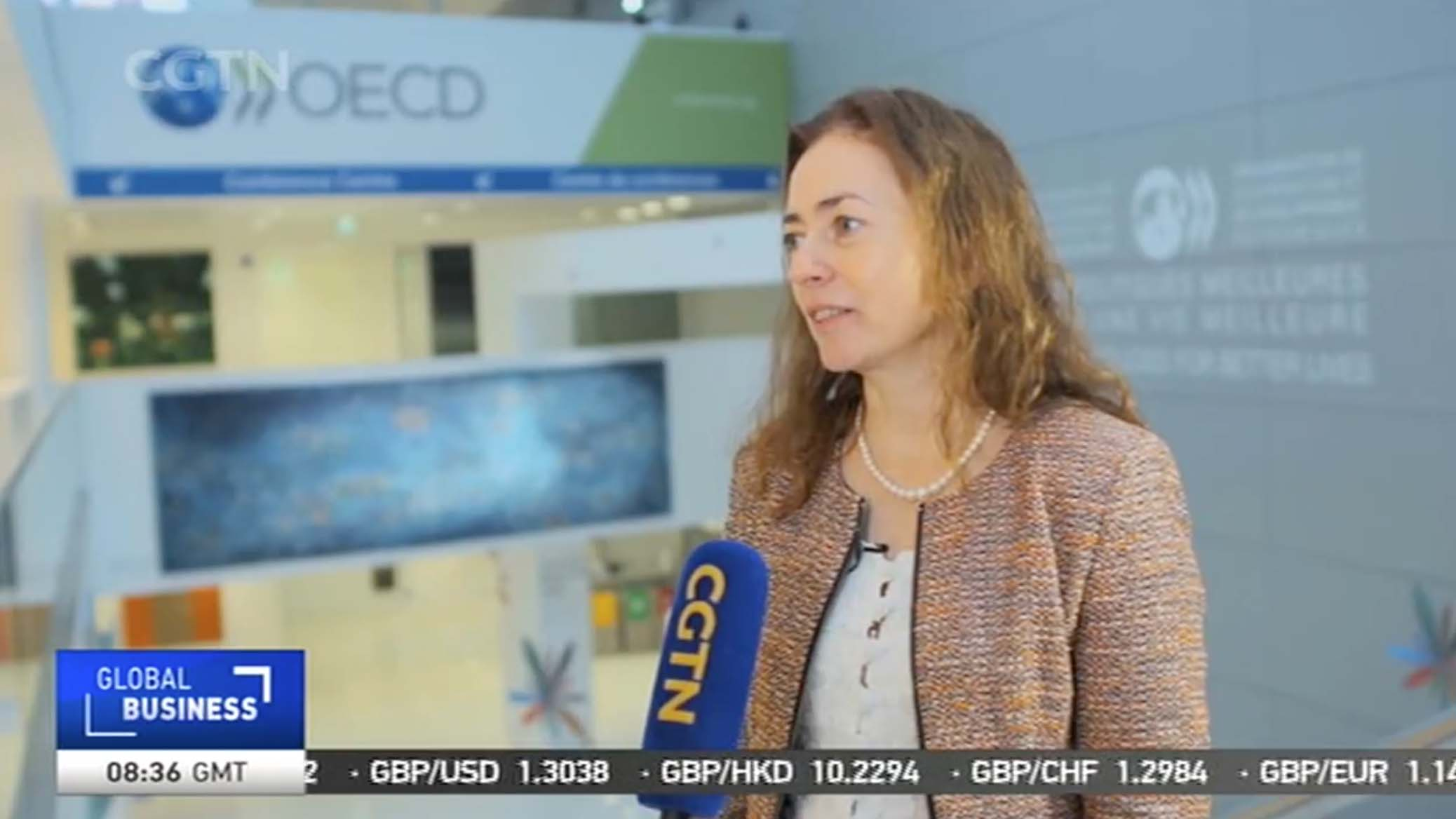
Economy
20:54, 24-Jan-2019
China EconTalk: OECD says China to remain a fast-growing economy for 10 years
Updated
08:14, 25-Jan-2019
CGTN's Global Business
02:54

Long-run economic projections of the world economy show that China will continue to be a major contributor to the global economy, with its contribution expected to peak around 2030, according to the Organization for Economic Cooperation and Development (OECD).
China's economy released its 2018 GDP growth rate at 6.6 percent, in line with the government's expectations.
“So far, the Chinese economy has been holding up well, 6.6 percent is what we have expected before, all the impact with trade tension is not really showing in the data yet," said Margit Molnar, head of China desk from the OECD.
According to a 2018 OECD report, China's GDP growth is projected to moderate to 6.7 percent in 2018 and to 6.4 percent in 2019. And the growth will decline in 2019-20. The signs of slowdown include the weakening of industrial production, profits and revenues.
The Chinese government has been using fiscal stimulus to boost consumption.
The recent tax reform is one of them, which aims at bolstering slowing economic growth by stimulating consumer spending. The law includes six new deductions which apply to rent, children's education, continuing education, the treatment of critical illnesses, mortgage interest and elder care. It also raised the monthly tax-free income threshold from 3,500 yuan (515 U.S. dollars) to 5,000 yuan (736 U.S. dollars).
But there are still challenges according to Molnar.
“We have seen some of the impacts of the individual income tax cut are not that desirable. For instance, it will have a negative impact on income quality which is shown in our upcoming economy survey of China and probably the impact on consumption will not be as big as it is expected, that is because the consumer confidence has decreased over a couple of months. The international trade tension will probably weight on consumption,” said Molnar.

Margit Molnar, head of China desk from the OECD. / CGTN Screenshot
Margit Molnar, head of China desk from the OECD. / CGTN Screenshot
Apart from domestic reforms inside China, Molnar sees the Belt and Road Initiative (BRI) as a promising and comprehensive strategy which can provide opportunities in trade and investment, along with harmonizing different policies by making it much easier for companies to operate along the way.
“For instance, the initiative can make it easier for inventors to register their patents,” said Molnar. “If such kind of goals are achieved, it will bring a very large efficiency gain.”
According to Asian Development Bank, Asia needs 26 trillion U.S. dollars in infrastructure investment by 2030, and China can certainly help to provide some of this by investing, building infrastructure and making positive impacts on countries involved through the BRI.
She said that though the global economy has yet to recover, China keeps growing fast and will continue to contribute around 25 percent to the world's GDP.

SITEMAP
Copyright © 2018 CGTN. Beijing ICP prepared NO.16065310-3
Copyright © 2018 CGTN. Beijing ICP prepared NO.16065310-3